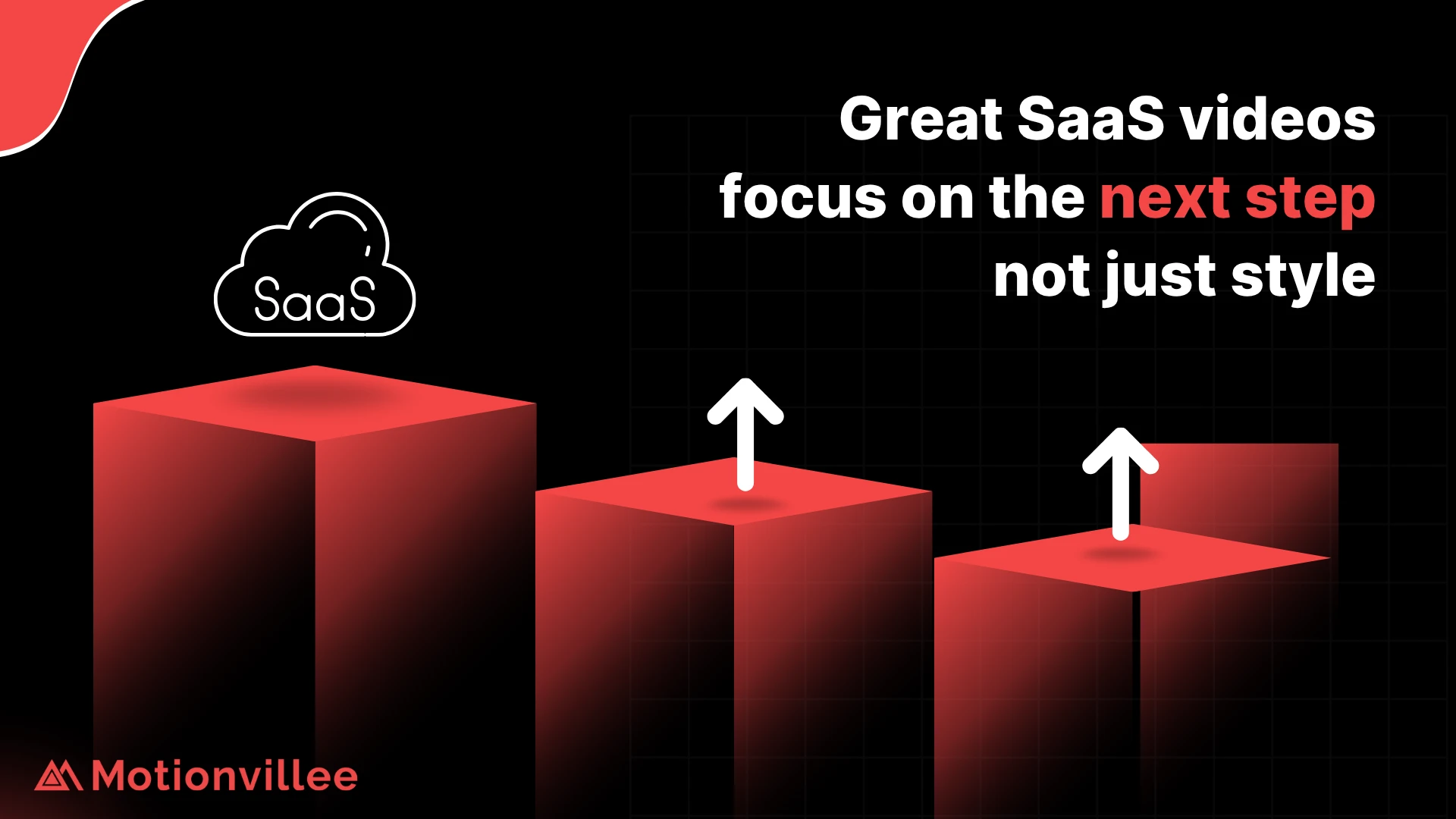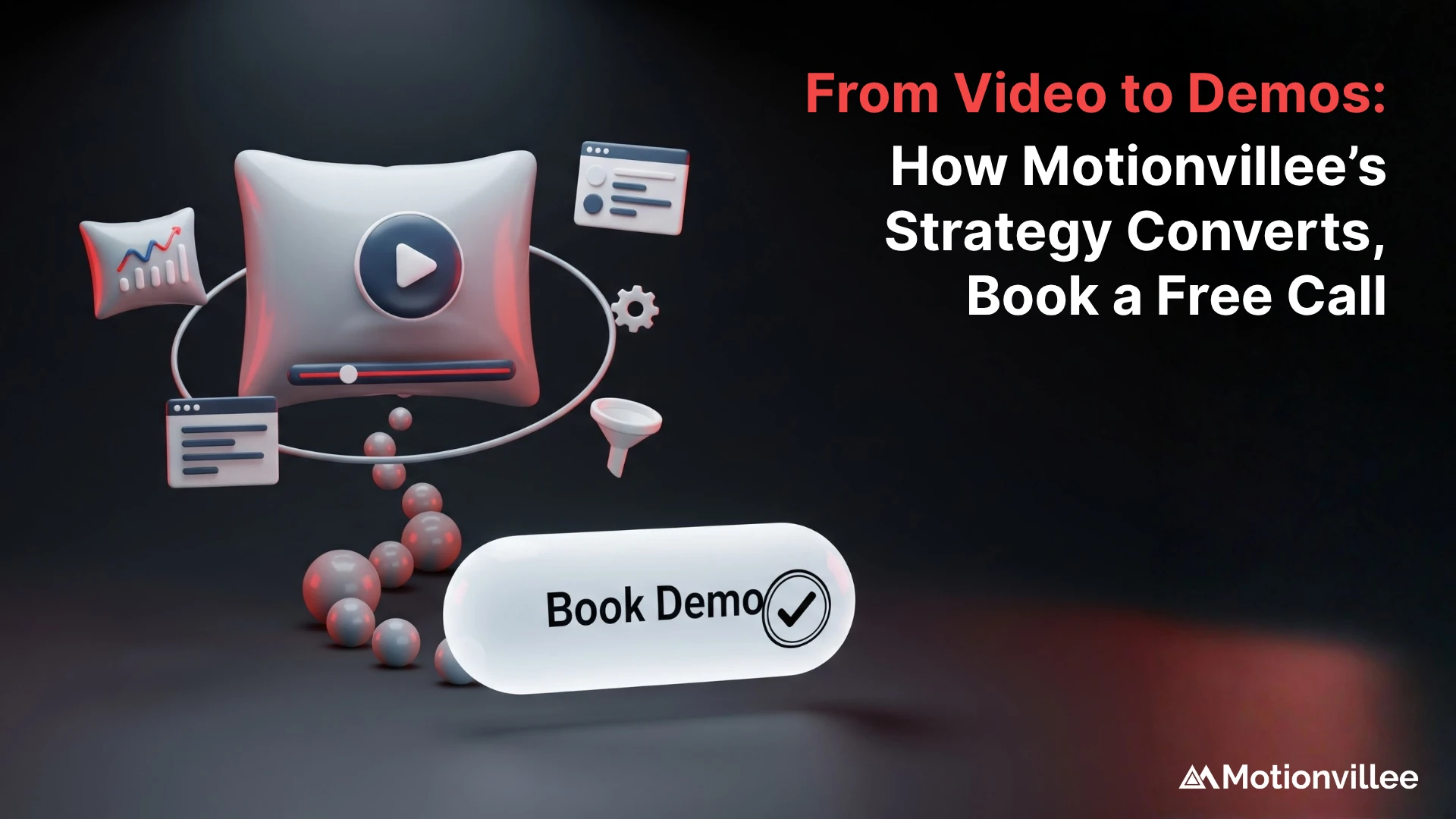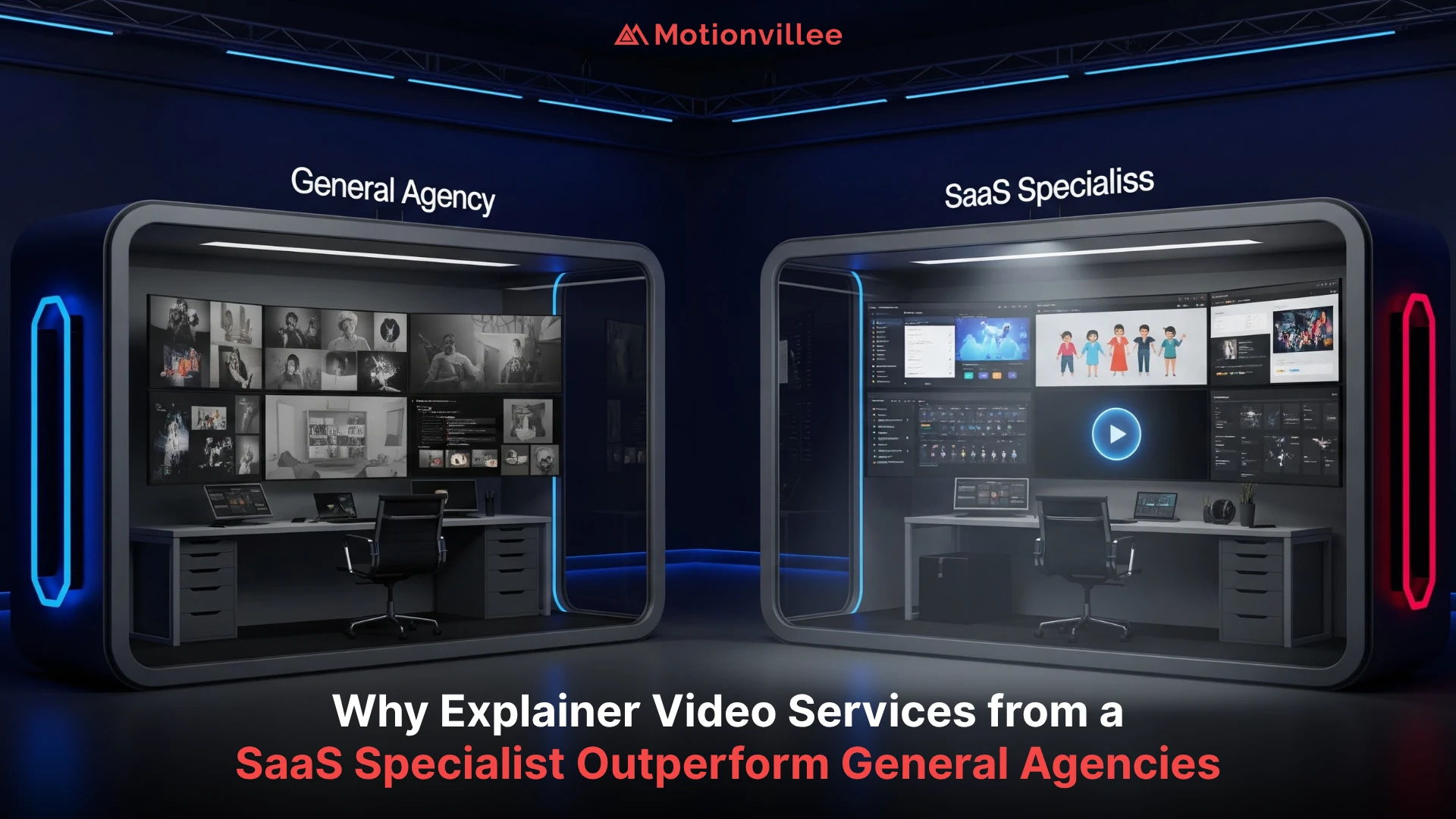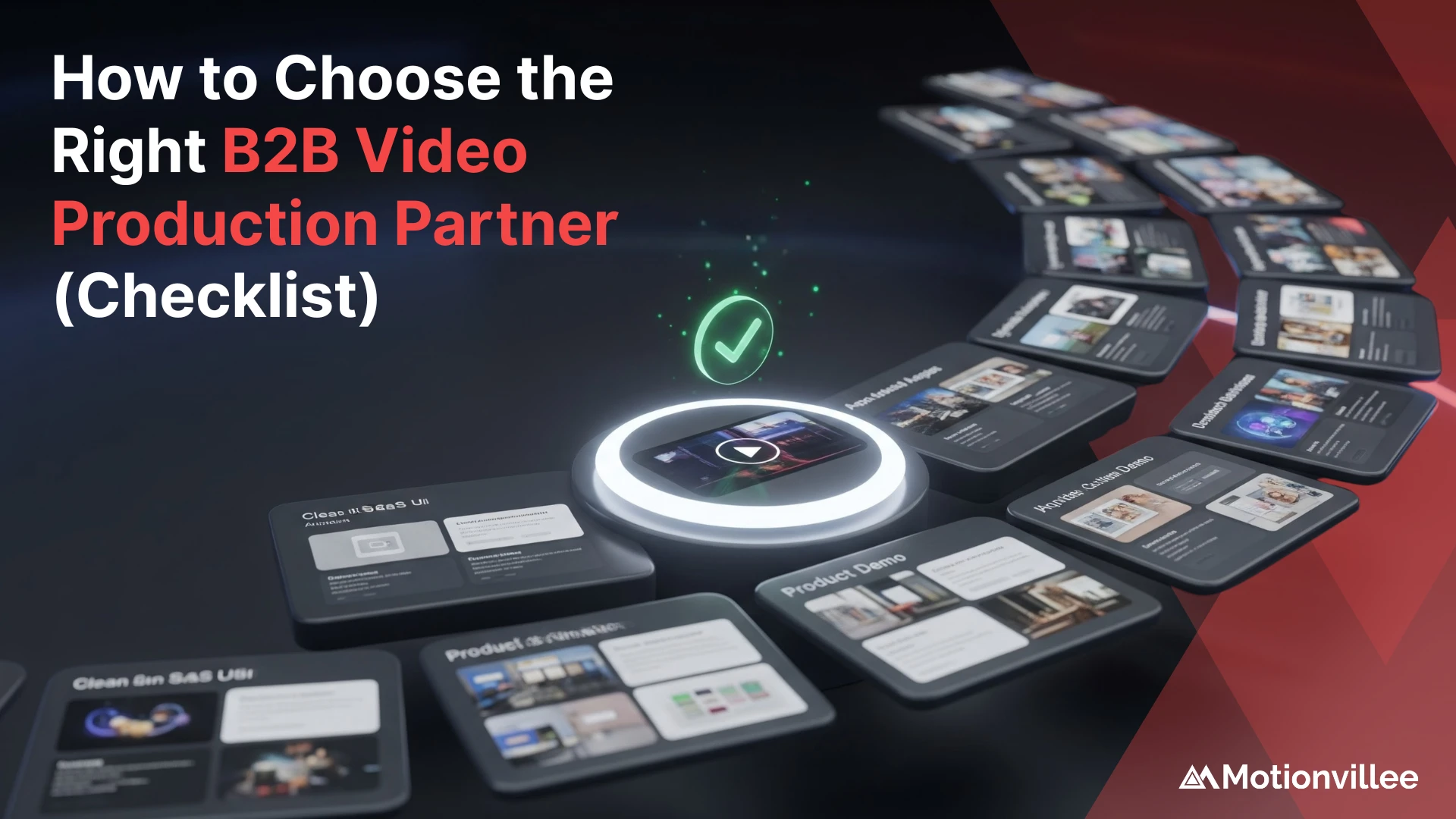A clean motion graphic or sleek animation might look impressive, but a SaaS video strategy built around style alone rarely drives results.
Too many SaaS brands focus on the visual first, then scramble to fit in messaging later. The outcome? A video that looks polished but leaves the viewer wondering what to do next.
The truth is, style without strategy usually fails to:
- Drive real engagement
- Move leads closer to a decision
- Support your sales funnel in a measurable way
This blog is not about animation trends or visual effects. It’s about building a video strategy for SaaS marketing that is structured to guide your viewer toward the next step, whether that’s a demo, sign-up, or reply.
Style vs Strategy: What’s the Difference?
A slick animation or eye-catching transition might make a video memorable. But that alone does not make it effective. In SaaS, style and strategy are not the same, and mixing them up is a common mistake.
Style refers to how your video looks:
- Animation type (2D, 3D, whiteboard)
- Color palette and design
- Music, voiceover, visual flair
It’s the polish. The surface. But on its own, style does not sell.
Strategy is where impact begins:
- What problem are you solving?
- Who is the video for?
- What action should the viewer take?
A conversion-focused SaaS video is built from strategy first. It is created to match a goal: awareness, consideration, or decision. Every scene, line, and call to action supports that purpose.
If you start your project with “How can we make this look cool?” you might get views, but not results.
Instead, ask:
- What does the viewer need to understand?
- What do we want them to do after watching?
- How does this video move them further in the funnel?
This shift in thinking from style to strategy is what separates passive content from video that performs.
Define the ‘Next Step’ Before You Write the Script
Every strong SaaS video strategy starts with a question:
What do you want the viewer to do after watching?
That one answer shapes your entire script.
Is the goal to:
- Get a sign-up?
- Book a demo?
- Trigger a reply?
- Encourage a share?
The more specific the next step, the clearer your message will be.
Here’s how this connects to your SaaS marketing video funnel:
- TOFU (Top of Funnel): Educate or build curiosity.
CTA: “Learn more” or “Explore the use case” - MOFU (Middle of Funnel): Clarify product value and differentiation.
CTA: “Book a live demo” or “See how it works” - BOFU (Bottom of Funnel): Support closing or post-sales.
CTA: “Talk to sales” or “Start your free trial”
This clarity affects:
- The tone of voice
- The structure of the video
- The call to action at the end
- The pacing and depth of product detail
Skipping this step often leads to videos that feel nice but do nothing. A smart strategy defines the destination first, then builds every creative choice around getting there.
Match Video Types to Funnel Goals
A strong SaaS video does more than look good. It fits into your buyer journey like a puzzle piece.
Each stage of your funnel needs a different kind of message. Using the same style everywhere leads to poor engagement and wasted budget.
Here’s how to match video types to funnel goals:
Top of Funnel (Awareness)
1. Goal: Grab attention, spark curiosity
2. Video Types:
- Brand overview
- Teaser videos
- Social shorts
3. Best for: Ads, social feeds, homepage hero sections
Middle of Funnel (Consideration)
1. Goal: Build trust, clarify your value
2. Video Types:
- Product walkthrough
- Feature breakdowns
- Use-case explainers
3. Best for: Landing pages, sales decks, webinars
Bottom of Funnel (Conversion)
1. Goal: Remove doubt, prompt action
2. Video Types:
- Testimonials
- Objection-handling videos
- Personalized sales follow-ups
3. Best for: Email sequences, proposal support, pitch decks
Bonus Tip:
- Repurpose one video into multiple touchpoints.
- A walkthrough can become social clips, email assets, or training content.
Matching video types to funnel stages ensures every asset serves a real purpose, not just a placeholder on your site.
What Strategic SaaS Videos Actually Look Like
A strategic SaaS video is not just good looking. It is built to guide a viewer toward a clear action.
The best videos are shaped by a clear SaaS video strategy, not just a script and storyboard.
They include:
- A defined target audience
- A funnel-specific goal (awareness, consideration, or conversion)
- A structure that builds interest and trust
- A CTA that feels logical, not forced
- A tone that aligns with your brand’s voice and pace
- Supporting visuals that clarify, not just decorate
These traits are what separate videos that generate leads from those that sit on YouTube gathering dust.
Common Mistakes to Avoid:
- Starting with visuals instead of message
- Using too much animation with no product clarity
- Writing without defining what the viewer should do next
- Chasing vanity metrics like views instead of actions
What to Look For in a Strategic Video:
- A clear narrative arc: hook, problem, solution, next step
- Voiceover and visuals that work together
- A message that sticks beyond the runtime
- One strong CTA, not three vague ones
A strong SaaS video strategy gives you a video that works across your sales funnel, not just one that looks nice in a brand showcase.
When to Evaluate Your Current Video Approach
It is easy to fall into the trap of thinking your videos are working just because they look good.
But if they are not helping move leads through your funnel, it is time to step back and re-evaluate.
Signs your current videos need a second look:
- High view counts but low conversions
- Great animation but no clear call to action
- No consistency across your video library
- Stakeholders love it but sales teams never use it
Ask yourself:
- Does each video have a defined goal tied to a funnel stage?
- Are you tracking performance beyond views?
- Is the video being used in email, sales, and landing pages?
- Is it clear who the video is for and what it asks them to do?
Quick checklist to audit your library:
- Is the video goal clearly mapped to TOFU, MOFU, or BOFU?
- Is the message focused on the user’s pain point and solution?
- Is there one actionable CTA?
- Are reps and marketers using it regularly in campaigns?
- Has the content been updated in the last 12 months?
If you answered “no” to most of these, it may be time to rethink your SaaS video strategy and realign it with your actual sales motion.
What to Do Next: Align Video with Sales, Not Just Branding
Style matters, but a saas video strategy built around the sales funnel is what actually drives results.
If your videos are designed to impress instead of convert, it’s time to shift focus.
Start by asking:
- What do we want the viewer to do next?
- Is the video aligned with a specific funnel stage?
- Are sales teams actually using it in conversations?
Instead of chasing trends, plan videos with real sales goals in mind. That shift alone can change how your prospects respond and how your team measures success.
If you’re rethinking how video fits into your growth motion, we’re here to help.
Schedule a call with Motionvillee to explore how we build videos that sell, not just show.







